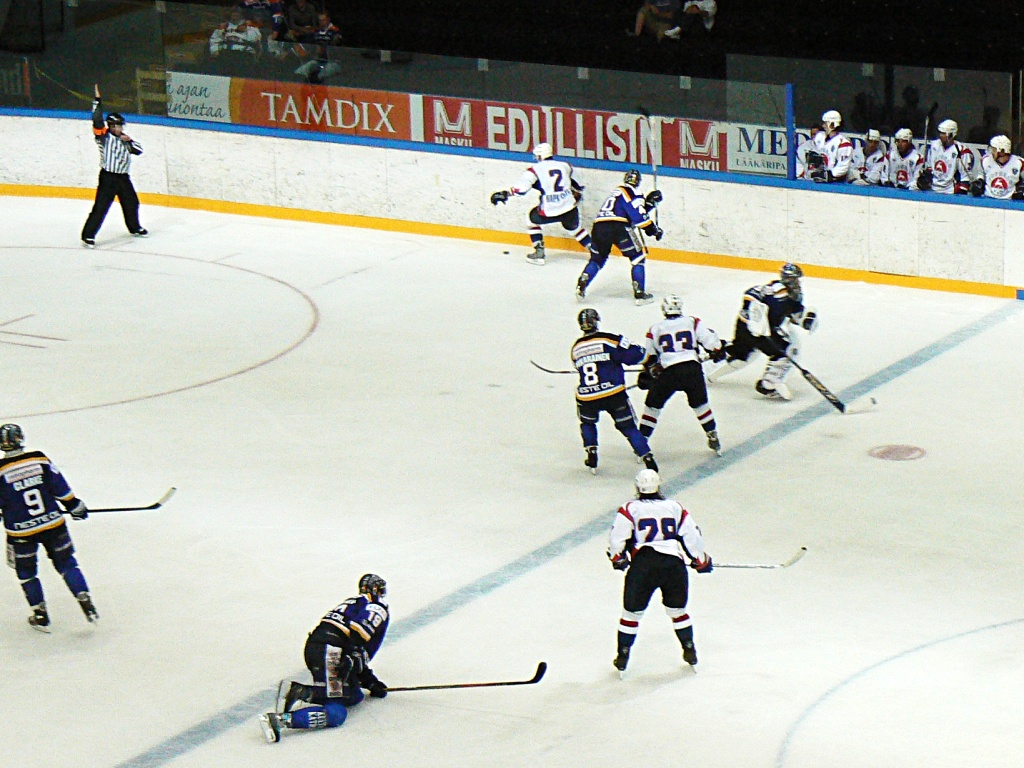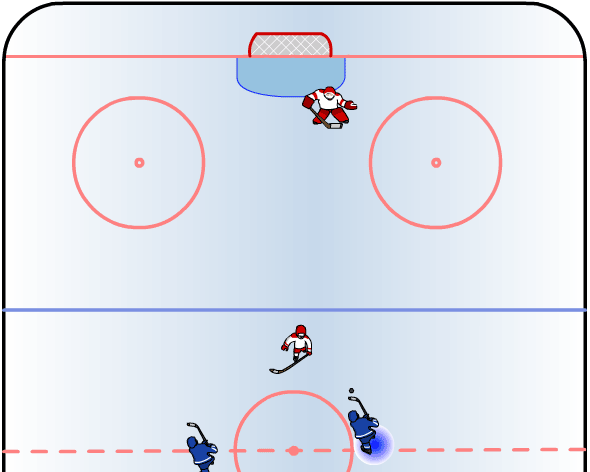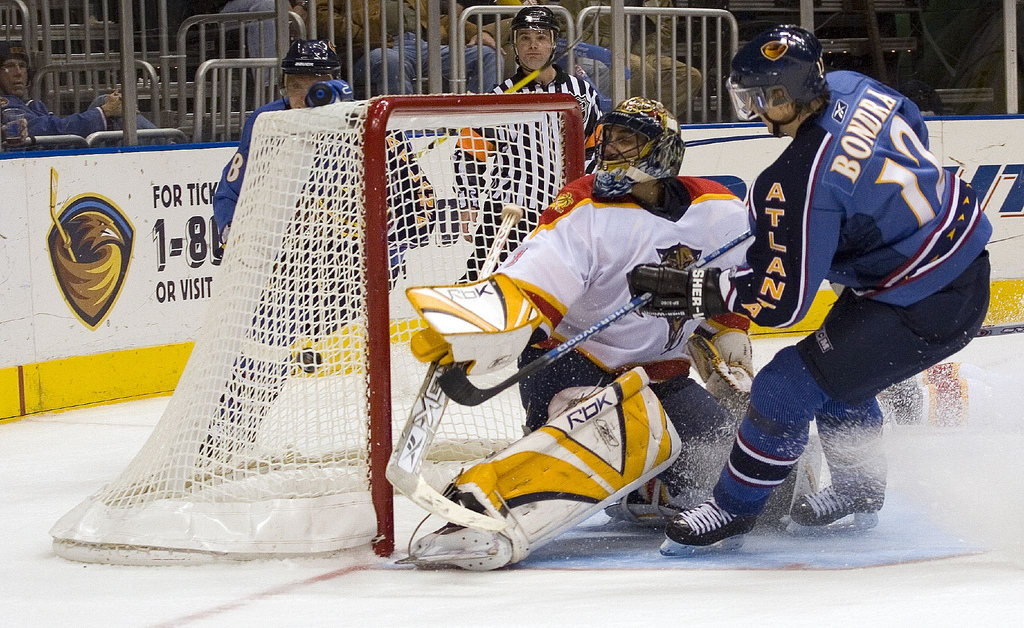|
Matthias Trattnig
Matthias Trattnig (born April 22, 1979) is an Austrian former professional ice hockey defenceman. He was selected by the Chicago Blackhawks in the 4th round (94th overall) of the 1998 NHL Entry Draft and was a leader at the University of Maine. Trattnig most notably played as the longtime Captain of EC Red Bull Salzburg of the Austrian Hockey League. Following his 14th season with EC Red Bull Salzburg in the 2018-19 season, Trattnig ended his 24-year professional career on 15 April 2019. He was a veteran member of the Austria men's national ice hockey team, and last participated at the 2011 IIHF World Championship. He also competed at the 2002 Winter Olympics and the 2014 Winter Olympics , ''Zharkie. Zimnie. Tvoi'') , nations = 88 , events = 98 in 7 sports (15 disciplines) , athletes = 2,873 , opening = 7 February 2014 , closing = 23 February 2014 , opened_by = President Vladimir Putin , cauldron = , stadium = Fisht Olympic .... Awards and honours Career statistics R ... [...More Info...] [...Related Items...] OR: [Wikipedia] [Google] [Baidu] |
Defenceman
Defence or defense (in American English) in ice hockey is a player position that is primarily responsible for preventing the opposing team from Goal (ice hockey), scoring. They are often referred to as defencemen, D, D-men or blueliners (the latter a reference to the blue line in ice hockey which represents the boundary of the offensive zone; defencemen generally position themselves along the line to keep the puck in the zone). They were once called cover-point. In regular play, two defencemen complement three Forward (ice hockey), forwards and a goaltender on the ice. Exceptions include Overtime (ice hockey), overtime during the regular season and when a team is Short-handed, shorthanded (i.e. has been assessed a penalty), in which two defencemen are typically joined by only two forwards and a goaltender. In National Hockey League regular season play in overtime, effective with the 2015–16 NHL season, 2015-16 season, teams (usually) have only three position players and a goa ... [...More Info...] [...Related Items...] OR: [Wikipedia] [Google] [Baidu] |
2002 Winter Olympics
The 2002 Winter Olympics, officially the XIX Olympic Winter Games and commonly known as Salt Lake 2002 ( arp, Niico'ooowu' 2002; Gosiute Shoshoni: ''Tit'-so-pi 2002''; nv, Sooléí 2002; Shoshoni: ''Soónkahni 2002''), was an international winter multi-sport event that was held from February 8 to 24, 2002 in and around Salt Lake City, Utah, United States. Salt Lake City was selected as the host city in June 1995 at the 104th IOC Session. They were the eighth Olympics to be hosted by the United States, and the most recent to be held in the country (Los Angeles will host the future 2028 Summer Olympics). The 2002 Winter Olympics and Paralympics were both organized by the Salt Lake Organizing Committee (SLOC), the first time that both events were organized by a single committee. The Games featured 2,399 athletes from 78 nations, participating in 78 events in 15 disciplines. Norway topped the medal table, with 13 gold and 25 medals overall, while Germany finished with the ... [...More Info...] [...Related Items...] OR: [Wikipedia] [Google] [Baidu] |
1995–96 Austrian Hockey League Season
The 1995–96 Austrian Hockey League season was the 66th season of the Austrian Hockey League, the top level of ice hockey in Austria Austria, , bar, Östareich officially the Republic of Austria, is a country in the southern part of Central Europe, lying in the Eastern Alps. It is a federation of nine states, one of which is the capital, Vienna, the most populous .... Eight teams participated in the league, and VEU Feldkirch won the championship. Regular season Playoffs Quarterfinals Semifinals Final External linksAustrian Ice Hockey Association {{DEFAULTSORT:1995-96 Austrian Hockey League season Aus 1995–96 in Austrian ice hockey leagues Austrian Hockey League seasons ... [...More Info...] [...Related Items...] OR: [Wikipedia] [Google] [Baidu] |
Penalty (ice Hockey)
A penalty in ice hockey is a punishment for an infringement of the rules. Most penalties are enforced by sending the offending player to a penalty box for a set number of minutes. During the penalty the player may not participate in play. Penalties are called and enforced by the referee, or in some cases, the linesman. The offending team may not replace the player on the ice (although there are some exceptions, such as fighting), leaving them short-handed as opposed to full strength. When the opposing team is said to be on a ''power play'', they will have one more player on the ice than the short-handed team. The short-handed team is said to be "on the penalty kill" until the penalty expires and the penalized player returns to play. While standards vary somewhat between leagues, most leagues recognize several common varieties of penalties, as well as common infractions. The statistic used to track penalties is called "penalty minutes" and abbreviated to "PIM" (spoken as single w ... [...More Info...] [...Related Items...] OR: [Wikipedia] [Google] [Baidu] |
Point (ice Hockey)
In ice hockey, point has three contemporary meanings. Personal stat A point is awarded to a player for each goal scored or assist earned. The total number of goals plus assists equals total points. The Art Ross Trophy is awarded to the National Hockey League (NHL) player who leads the league in scoring points at the end of the regular season. Team stat Points are also awarded to assess standings (or rankings). Historically, teams were awarded two points for each win, one point for each tie and no points for a loss. Such a ranking system, implemented primarily to ensure a tie counted as a "half-win" for each team in the standings, is generally regarded as British and/or European in origin and as such adopted by the National Hockey League which was founded in Canada where leagues generally used ranking systems of British origin. Awarding points in the standings contrasts with traditional American ranking systems favored in sports originating within the United States where today the m ... [...More Info...] [...Related Items...] OR: [Wikipedia] [Google] [Baidu] |
Assist (ice Hockey)
In ice hockey, an assist is attributed to up to two players of the scoring team who shot, passed or deflected the puck towards the scoring teammate, or touched it in any other way which enabled the goal, meaning that they were "assisting" in the goal. There can be a maximum of two assists per goal. The assists will be awarded in the order of play, with the last player to pass the puck to the goal scorer getting the primary assist and the player who passed it to the primary assister getting the secondary assist. Players who gain an assist will get one point added to their player statistics. Despite the use of the terms "primary assist" and "secondary assist", neither is worth more than the other, and neither is worth more or less than a goal. Assists and goals are added together on a player's scoresheet to display that player's total points. Special cases If a player scores off a rebound given up by a goaltender, assists are still awarded, as long as there is no re-possession by t ... [...More Info...] [...Related Items...] OR: [Wikipedia] [Google] [Baidu] |
Goal (ice Hockey)
In ice hockey, a goal is scored when the puck entirely crosses the goal line between the two goal posts and below the goal crossbar. A goal awards one point to the team attacking the goal scored upon, regardless of which team the player who actually deflected the puck into the goal belongs to (see also own goal). Typically, a player on the team attempting to score shoots the puck with their stick towards the goal net opening, and a player on the opposing team called a goaltender tries to block the shot to prevent a goal from being scored against their team. The term goal may also refer to the structure in which goals are scored. The ice hockey goal is rectangular in shape; the front frame of the goal is made of steel tube painted red (blue in the ECHL because of a sponsorship deal with GEICO) and consists of two vertical goalposts and a horizontal crossbar. A net is attached to the back of the frame to catch pucks that enter the goal and also to prevent pucks from entering it ... [...More Info...] [...Related Items...] OR: [Wikipedia] [Google] [Baidu] |
Season (sports)
In an organized sports league, a typical season is the portion of one year in which regulated games of the sport are in session: for example, in Major League Baseball the season lasts approximately from the last week of March to the last week of September. In other team sports, like association football or basketball, it is generally from August or September to May although in some countries - such as Northern Europe or East Asia - the season starts in the spring and finishes in autumn, mainly due to weather conditions encountered during the winter. A year can often be broken up into several distinct sections (sometimes themselves called seasons). These are: a preseason, a series of exhibition games played for training purposes; a regular season, the main period of the league's competition; the postseason, a playoff tournament played against the league's top teams to determine the league's champion; and the offseason, the time when there is no official competition. Preseason In ... [...More Info...] [...Related Items...] OR: [Wikipedia] [Google] [Baidu] |
Playoffs
The playoffs, play-offs, postseason or finals of a sports league are a competition played after the regular season by the top competitors to determine the league champion or a similar accolade. Depending on the league, the playoffs may be either a single game, a series of games, or a tournament, and may use a single-elimination system or one of several other different playoff formats. Playoff, in regard to international fixtures, is to qualify or progress to the next round of a competition or tournament. In team sports in the U.S. and Canada, the vast distances and consequent burdens on cross-country travel have led to regional divisions of teams. Generally, during the regular season, teams play more games in their division than outside it, but the league's best teams might not play against each other in the regular season. Therefore, in the postseason a playoff series is organized. Any group-winning team is eligible to participate, and as playoffs became more popular they were ... [...More Info...] [...Related Items...] OR: [Wikipedia] [Google] [Baidu] |
Regular Season
In an organized sports league, a typical season is the portion of one year in which regulated games of the sport are in session: for example, in Major League Baseball the season lasts approximately from the last week of March to the last week of September. In other team sports, like association football or basketball, it is generally from August or September to May although in some countries - such as Northern Europe or East Asia - the season starts in the spring and finishes in autumn, mainly due to weather conditions encountered during the winter. A year can often be broken up into several distinct sections (sometimes themselves called seasons). These are: a preseason, a series of exhibition games played for training purposes; a regular season, the main period of the league's competition; the postseason, a playoff tournament played against the league's top teams to determine the league's champion; and the offseason, the time when there is no official competition. Preseason In ... [...More Info...] [...Related Items...] OR: [Wikipedia] [Google] [Baidu] |
1997–98 NCAA Division I Men's Ice Hockey Season
The 1997–98 NCAA Division I men's ice hockey season began in October 1997 and concluded with the 1998 NCAA Division I men's ice hockey tournament's championship game on April 4, 1998, at the FleetCenter in Boston, Massachusetts. This was the 51st season in which an NCAA ice hockey championship was held and is the 104th year overall where an NCAA school fielded a team. Pre-season polls Regular season Season tournaments Standings 1998 NCAA tournament Note: * denotes overtime period(s) Player stats Scoring leaders The following players led the league in points at the conclusion of the season. ''GP = Games played; G = Goals; A = Assists; Pts = Points; PIM = Penalty minutes'' Leading goaltenders The following goaltenders led the league in goals against average at the end of the regular season while playing at least 33% of their team's total minutes. ''GP = Games played; Min = Minutes played; W = Wins; L = Losses; OT = Overtime/shootout losses; GA = Goals a ... [...More Info...] [...Related Items...] OR: [Wikipedia] [Google] [Baidu] |
List Of All-Hockey East Teams
The All-Hockey East Teams are composed of all players from teams that are members of Hockey East, an NCAA Division I hockey-only conference. Each year, from the 1984–85 season onward, at the conclusion of the Hockey East regular season, the head coaches of each team vote for players to be placed on each all-conference team. The First, Second, and Rookie Teams have been named in each ECAC Hockey season, except for 1985–86, in which no Rookie Team was named. The all-conference teams are composed of one goaltender, two defensemen, and three forwards. If a tie occurs for the final selection of any position, both players are included as part of the greater all-conference team. However, if a tie resulted in an increase in the number of superior all-stars, the inferior team would not be reduced in number, which happened in the 1985–86 and 2009–10 seasons. Players may only appear once per year on any of the first or second teams, but freshman may appear on both the rookie tea ... [...More Info...] [...Related Items...] OR: [Wikipedia] [Google] [Baidu] |





